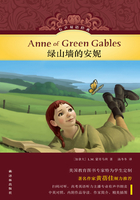Birds form an important class of vertebrates, with special characteristics. They produce their young from eggs, and suckle them; they have hard horny beaks which serve instead of teeth; their fore-limbs are modified into wings; their feet are claws. Like mammals they have warm red blood; their heart has four chambers; and they breathe through lungs. This great class consists of several distinct orders.
First among these orders come the flesh eaters or birds of prey. They are the fierce, powerful, blood-thirstyhunters of the air. They l i v e o n t h e f l e s h o f other animals, and are provided with strong h o o k e d b e a k s , a n d powerful talons to seize and rend their prey. The order includes the eagle, falcon, hawk, condor, vulture, and owl. The owl is a night prowler; all the rest hunt their prey in the daylight.
It is well to compare the owl with the cats and other night-prowling beasts. The eyes in each case are made to see best at night. An owl in the daytime presents a curious appearance fromits blinking eyes, which cannot bear the daylight. It spends the day in some dark secluded spot, and never comes out till after dusk, when it preys upon rats, mice, and other night animals.
The eagle and the other members of the order are distinguished by their powerful piercing eyes, which canbear the most brilliant sun without blinking. They sight their victim from an enormous height, and swoop down with unerring aim upon birds on the wing, poultr y feeding in the field, and even upon rabbits, hares, and young lambs.
The second order are the climbers.
These have strong muscular legs, and each foot has two toes pointing forwardsand backwards. These birds live entirely in trees, and their claws enable them to climb easily and cling firmly. Many of them use thebeak as well as the feet in climbing. They donot walk well. Among the climbers are the woodpecker cuckoo, parrot, and cockatoo.
The next order are the perchers; and of them we may take the common sparrow, robin, thrush and blackbird as examples. Theyhave three toes pointing forwards and one backwards. They are made for a tree life, when on the ground, they move about with a series of little short hops. They cannot walk. You, of course, remember the peculiar and admirable arrangement of the leg and foot tendons, by which these birds are enabled,merely by their own weight, to rest securely on a twig or branch even when asleep.
This order includes most of the common birds of our English woods, as well as the gorge birds of paradise and other foreign birds.
The scratchers, or poultry birds, form the next order. They derive their name, scratchers, from their habit of scratching or scraping in the earth to find their food. For this purpose they are provided with stout strong legs, and the claws are short andarmed with blunt nails. These birds feed largely on grain, which they swallow whole because they have no teeth to masticate it. The workof crushing the food is done in a strong internal muscular bag, the gizzard, through which all the food must pass.
In addition to the common fowls, this order includes the pigeon, dove, partridge, pheasant, quail, turkey, and peacock.
Lesson 38















